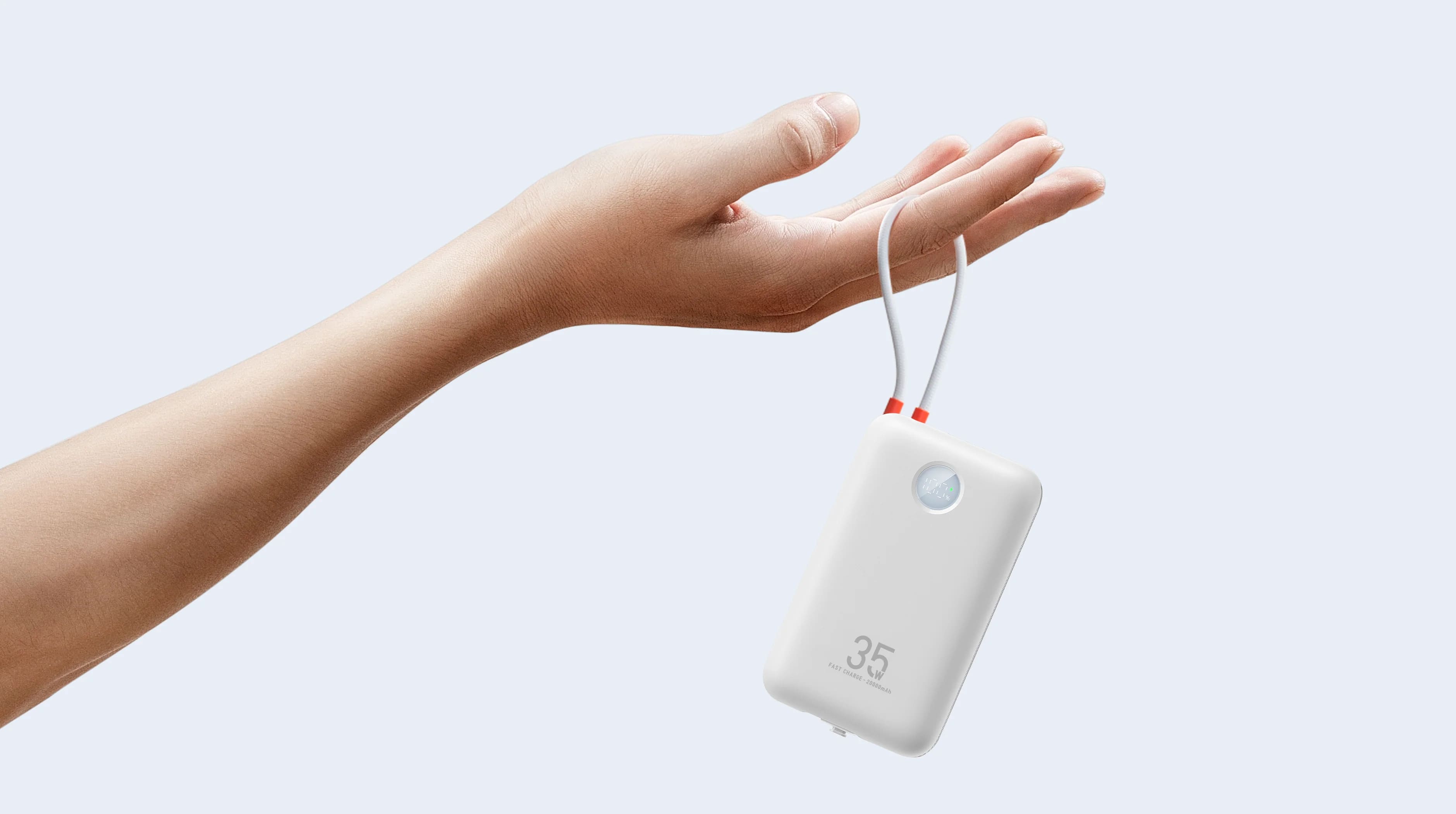Ever found yourself racing against a deadline, only for your laptop to run out of battery—right when you need it most? Fortunately, portable charging solutions have come a long way, and learning how to charge a laptop with a power bank is easier than ever. Whether you’re a student, traveler, or digital nomad, this article walks you through how to keep your laptop powered up wherever you are.
In this guide, we’ll walk you through the ins and outs of laptop charging with a power bank. We’ll clear up the tech jargon, bust common myths, and show you exactly what gear you need. And yes—we’ll help you choose the best laptop power bank that won’t let you down.
Can I Charge Laptop with Power Bank?
The short answer is: yes—but not just any power bank will do. Not all power banks are designed to support the power requirements of laptops. Unlike phones, laptops need much higher wattage (usually between 45W to 100W), and this is where USB-C Power Delivery (PD) comes into play.
You may also ask: can all laptops be charged with power banks? The answer is No. Older laptops with proprietary charging ports or those requiring more than 100W of power may not be compatible with laptop power bank. However, most modern laptops, including MacBooks, Dell XPS, Lenovo ThinkPads, and some HP and ASUS models, support USB-C PD charging.
Before plugging in, always confirm that:
- Your laptop supports USB-C Power Delivery (PD)
- The laptop power bank offers sufficient wattage output (at least 45W)
- You’re using a compatible USB-C to USB-C cable rated for PD
What You Need to Know Before Charging a Laptop with a Power Bank?
Before you learn how to charge a laptop with power bank, here are essential things to understand:
1. Power Output Requirements
Your laptop needs a lot more juice than your phone. While smartphones can charge on 10W or 18W, laptops require a minimum of 45W—and many demand 65W to 100W. Always check both the input requirement on your laptop and the maximum output on your power bank. Read how many watts a laptop charger uses for a deeper look.
2. Battery Capacity
You’ll want at least 20,000mAh to get a full laptop charge. For high-performance laptops or longer runtime, go for 30,000mAh or more. Be aware that a 100Wh power bank is typically the maximum size allowed on airplanes.
3. Cable Quality
You’ll need a USB-C to USB-C cable that supports 100W PD. Cables matter more than people think. A low-quality cable can bottleneck charging speeds or cause interruptions.
4. Safety Certifications
Always choose a power bank with built-in protections like over-voltage, over-temperature, and short-circuit protection. Reputable brands like Veger invest in these features to ensure safety.
How to Charge a Laptop with a Power Bank
Ready to power up? Follow these hands-on steps to safely and efficiently charge your laptop:
Step 1: Check Your Laptop’s Charging Port
Confirm that your laptop supports USB-C PD input. If it only has a round barrel or proprietary charging port, this method won’t work unless you’re using an AC-output power bank.
Step 2: Choose a Compatible Power Bank
Make sure your laptop power bank offers at least the wattage your laptop needs. Most ultrabooks can charge on 45W; gaming laptops may need 60W to 100W.
Step 3: Connect with the Right Cable
Use a high-quality USB-C to USB-C cable that supports 100W (20V/5A). Avoid cables that don’t clearly indicate PD support.
Step 4: Plug In and Monitor Charging
Connect the power bank to your laptop. The laptop should show a charging icon or LED indicator. Some power banks have LED screens showing output wattage—use this to confirm it’s delivering sufficient power.
Step 5: Optimize Your Laptop Settings
For faster charging, dim your screen, close unnecessary apps, or put your laptop into sleep mode.
How to Choose the Best Power Bank for Charging Laptops
When selecting the laptop power bank, consider the following:
- Power Output: Go for 60W–100W PD support.
- Battery Capacity: At least 20,000mAh is ideal for most users.
- Portability: Slim models are great for travel, but may offer fewer ports.
- Build Quality & Safety: Look for certifications like CE, FCC, RoHS, and built-in protection against overcurrent, overheating, and short circuits.
Bonus Tip: Veger offer compact, high-wattage best laptop power banks with fast charging and multi-port output. Their smart circuitry also ensures device protection while delivering efficient power transfer.
Pros and Cons of Charging a Laptop with a Power Bank
Understanding both benefits and drawbacks will help you decide when and how often to rely on a power bank for your laptop.
Pros
- Portability: No need to find a wall socket on the go
- Convenience: Power multiple devices from one unit
- Emergency Backup: Ideal for travel, outages, or remote work
Cons
- Limited Capacity: Most power banks offer only 1–1.5 full laptop charges
- Slower Charging: May be slower than wall adapters, especially for high-performance laptops
- Incompatibility Risks: Non-PD power banks or low-quality cables won’t work properly
Why Won’t My Power Bank Charge My Laptop?
If your power bank isn’t working, don’t panic. Here’s how to fix common issues:
1. Incompatible Power Output
Make sure your power bank supports USB-C PD and offers at least 45W output. Many smartphone-focused chargers top out at 18W.
2. Incorrect Cable
Use only certified PD-rated USB-C cables. E-Marker chips inside the cable help regulate power safely.
3. Laptop Requirements Exceed Power Bank’s Output
Gaming laptops or power-hungry devices may not charge or will charge very slowly if your power bank can’t deliver enough power.
4. Firmware or Software Conflict
Some laptops limit third-party charging for safety. Try rebooting the laptop or enabling external charging options in BIOS settings.
If none of these work, try resetting your power bank by unplugging all cables and pressing the power button for 10–15 seconds, if supported
FAQ about How to Charge a Laptop with a Power Bank
Can I charge my laptop using a power bank overnight?
Yes, but it’s best to avoid prolonged overnight charging. Most modern power banks have auto shut-off to prevent overcharging, but for safety, unplug when the laptop is full.
Will a power bank damage my laptop battery?
No, as long as you're using a certified laptop power bank with PD support and high-quality cables. In fact, these devices are designed to regulate output to avoid overvoltage or overheating.
Can I run my laptop directly via the power bank while plugged in?
Yes. Many users run their laptops while charging via a power bank. However, this drains the power bank faster. Make sure your power bank supports pass-through charging if you need to charge both the laptop and power bank simultaneously.
Conclusion
Knowing how to charge a laptop with a power bank opens up new levels of flexibility for students, travelers, and professionals. While it’s essential to verify compatibility and choose the right capacity and power output, the right setup can keep you going for hours without ever needing a wall outlet.
If you’re looking for a trusted laptop power bank brand, consider Veger. With a line of fast-charging, compact, and high-capacity power banks tailored for laptops and smartphones alike, Veger delivers powerful performance on the go. Engineered with smart protection and multiple port options, Veger ensures your devices stay safe and fully charged wherever life takes you.
Explore Veger’s latest range of laptop power bank solutions and never get stuck with a dead battery again.

![How to Charge a Laptop with a Power Bank in 2025 [New]](http://www.vegerpower.com/cdn/shop/articles/how-to-charge-a-laptop-with-a-power-bank.png?v=1752217907&width=1500)


![What to Do If Power Bank Is Swollen [Expert Tip]](http://www.vegerpower.com/cdn/shop/articles/swollen-power-bank_37d4a9b7-3372-484f-98a6-03e7cd82d4da.webp?v=1753165226&width=1000)